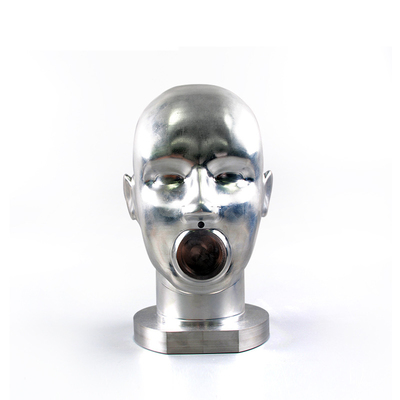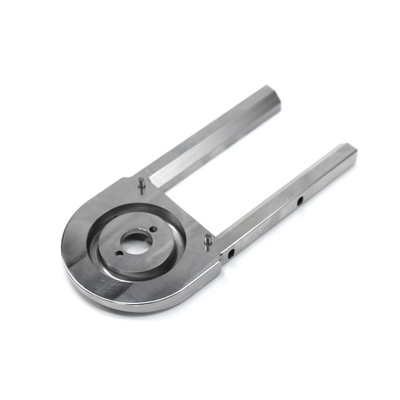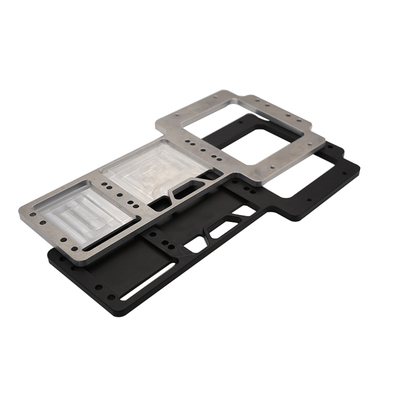Is Silver Magnetic?

Silver, with the chemical symbol Ag and atomic number 47, is a transition metal that has played a significant role throughout human history due to its various physical, chemical, and economic properties. One of the common questions regarding silver pertains to its magnetic properties, which leads to the overarching inquiry: Is silver magnetic?
This article delves into the subject of silver's magnetism, covering topics such as its atomic structure, comparison with other elements, the theory of magnetism, practical applications, and experimental evidence. This comprehensive analysis will provide a clear understanding of whether silver is magnetic and under what circumstances it might exhibit magnetic behavior.
1. Introduction to Magnetism
Before we focus on silver, it is essential to understand the fundamental principles of magnetism. Magnetism arises from the movement of charged particles, specifically electrons, within atoms and the alignment of atomic magnetic moments. The magnetic properties of a material are largely dependent on its atomic structure and the arrangement of its electrons. There are several categories of magnetic behavior, which can be broadly classified as:
- Diamagnetism: A weak, negative response to an external magnetic field, where a material slightly repels a magnetic field.
- Paramagnetism: A weak, positive response to an external magnetic field, where the material is attracted to the field, but only when the field is applied.
- Ferromagnetism: A strong, positive response to an external magnetic field, where the material retains magnetic properties even after the external field is removed.
- Antiferromagnetism: A type of magnetism in which adjacent atomic moments align in opposite directions, canceling out magnetic effects.
- Ferrimagnetism: Similar to antiferromagnetism, but the opposing moments are unequal, so there is a net magnetic effect.
In the context of this article, we will explore whether silver fits into any of these categories.
2. Silver’s Atomic Structure
Silver is located in Group 11 of the periodic table, also known as the coinage metals, along with copper (Cu) and gold (Au). It has an atomic mass of 107.8682 u and belongs to the d-block of the periodic table, which consists of transition metals. The electronic configuration of silver is:
[Kr]4d 105s 1
This configuration shows that silver has one electron in the 5s orbital and a filled 4d subshell. The d-block elements are known for their ability to exhibit various oxidation states and magnetic properties, but silver’s specific electron configuration makes it an interesting subject for magnetism studies.
- Unpaired Electrons: Magnetism in elements typically arises from unpaired electrons in an atom. Silver, however, has a filled 4d subshell, meaning all of its electrons in that shell are paired. The 5s^1 electron is the only unpaired electron, but this does not significantly contribute to magnetic properties due to the weak interactions involved.
3. Is Silver Magnetic?
Based on its atomic structure, silver is generally classified as diamagnetic. Diamagnetic materials are characterized by their weak repulsion from an external magnetic field. This diamagnetism occurs because the motion of electrons within the atomic orbitals creates small, opposing magnetic fields. When an external magnetic field is applied to a diamagnetic material, it induces a slight realignment of these atomic magnetic fields in opposition to the applied field, causing the material to be weakly repelled by the magnetic source.
Thus, silver in its pure form does not exhibit strong magnetic properties. It does not become magnetized when exposed to a magnetic field, nor does it retain any magnetization after the removal of the magnetic field, unlike ferromagnetic materials such as iron (Fe), cobalt (Co), or nickel (Ni).
4. Theoretical Foundations of Diamagnetism in Silver
To understand silver’s diamagnetism, we must delve deeper into the quantum mechanics that govern the behavior of electrons in atoms. According to Lenz's Law, diamagnetism arises as a consequence of the orbital motion of electrons in an atom. When a magnetic field is applied to an atom, it induces a current in the electrons’ orbits, which in turn generates a magnetic field opposing the external field.
In the case of silver, its filled 4d subshell plays a crucial role in its diamagnetic properties. The electrons in this subshell are paired, meaning their magnetic moments cancel each other out. The lone unpaired electron in the 5s orbital also contributes very little to any net magnetic moment, as its interaction with external magnetic fields is minimal.
The phenomenon of diamagnetism in silver is weak compared to the strong ferromagnetic effects seen in materials like iron. This weak diamagnetic effect can only be detected with sensitive instruments, as it does not manifest in the everyday experience of handling silver objects.
5. Comparison with Other Metals
Silver’s magnetic properties can be better understood by comparing it with other metals. Below, we look at how silver compares to other common elements in terms of magnetism:
5.1 Copper (Cu)
Copper, silver's Group 11 neighbor, shares a similar electron configuration: . Like silver, copper is also diamagnetic due to its completely filled 3d subshell and minimal contribution from the unpaired 4s electron. Thus, copper, like silver, exhibits no noticeable magnetic properties under normal conditions.
5.2 Gold (Au)
Gold is another Group 11 element, with an electron configuration of . Similar to silver, gold is also diamagnetic. Its d-electrons are fully paired, and it has only one unpaired electron in its outermost s orbital. Gold, therefore, behaves similarly to silver in terms of magnetism.
5.3 Ferromagnetic Materials (Iron, Cobalt, Nickel)
Iron, cobalt, and nickel are examples of ferromagnetic materials, meaning they have strong magnetic properties. This is due to the presence of unpaired electrons in their d-orbitals and the exchange interactions between these electrons, which cause their magnetic moments to align in the same direction. Silver, by contrast, lacks the unpaired electrons in its d-orbitals and does not exhibit ferromagnetic behavior.
6. Magnetism in Silver Alloys
While pure silver is diamagnetic, certain silver alloys may exhibit different magnetic properties depending on the metals with which silver is alloyed. For example:
- Silver-Nickel Alloys: Nickel is ferromagnetic, and when alloyed with silver, the resulting material can exhibit weak ferromagnetic properties depending on the concentration of nickel. However, the overall magnetic response will still be much weaker than that of pure nickel.
- Silver-Copper Alloys: As copper is also diamagnetic, silver-copper alloys do not exhibit any noticeable magnetic properties and remain largely non-magnetic.
7. Superconductivity in Silver
Silver is not a superconductor at ambient conditions, but it does have excellent electrical conductivity. Superconductivity is a quantum mechanical phenomenon in which a material can conduct electricity without resistance when cooled to very low temperatures, typically close to absolute zero. Superconductors exhibit a phenomenon known as the Meissner effect, where they expel magnetic fields from their interior.
While silver is not itself superconducting, certain silver-based compounds have been studied for their potential superconducting properties. These compounds may exhibit magnetic effects that are absent in pure silver.
8. Applications of Silver and Its Magnetic Properties
Although silver's diamagnetism is weak, its other properties make it invaluable in various applications. Silver is highly prized for its electrical conductivity, thermal conductivity, and reflective properties. Some areas where silver is used include:
- Electronics: Silver's excellent conductivity makes it an ideal choice for use in electrical contacts, conductors, and printed circuits.
- Jewelry and Silverware: Silver’s malleability, luster, and tarnish resistance make it popular for decorative items.
- Photography: Silver halides were historically used in photographic films due to their sensitivity to light.
- Medical Uses: Silver's antimicrobial properties have led to its use in wound dressings, medical equipment, and coatings.
While silver is not magnetic, it may be used in conjunction with magnetic materials in applications that require both conductivity and magnetism, such as in certain types of sensors and electrical components.
9. Experimental Evidence
Numerous experiments have confirmed silver's diamagnetic behavior. In a typical setup, a sample of silver is placed in a strong magnetic field, and the material exhibits a slight repulsion from the field. This can be measured using sensitive magnetometers, which detect the small but measurable changes in the magnetic field around the silver sample.
Additionally, studies using more advanced techniques, such as nuclear magnetic resonance (NMR) and electron spin resonance (ESR), have provided further insights into the electronic structure of silver and its weak magnetic interactions.
10. Magnetism in Bulk vs. Nanoscale Silver
At the nanoscale, materials can exhibit properties that differ from their bulk counterparts. Recent research has explored the magnetic behavior of silver nanoparticles, which can sometimes show unusual magnetic effects not seen in bulk silver. These effects are typically a result of the increased surface area and altered electron behavior at the nanoscale.
In certain cases, silver nanoparticles have exhibited weak paramagnetic behavior, although the underlying mechanisms are still a subject of ongoing research.
11. Conclusion
In summary, silver is not magnetic in the conventional sense. As a diamagnetic material, it exhibits a weak repulsion to magnetic fields but does not retain any magnetization once the external field is removed. This behavior is due to its filled d-electron subshell and minimal contributions from its lone s-electron.
Silver's magnetic properties stand in contrast to those of ferromagnetic materials like iron, cobalt, and nickel, which possess unpaired d-electrons and strong magnetic interactions. Nonetheless, silver’s diamagnetism is a well-understood phenomenon and has been thoroughly documented through both theoretical studies and experimental evidence.
While silver’s weak diamagnetic properties may not make it suitable for applications requiring strong magnetism, its other properties—such as electrical conductivity and reflectivity—make it indispensable in a wide range of industries. Additionally, research into silver alloys and nanomaterials continues to expand our understanding of how silver’s properties, including magnetism, can be tailored for specific applications.
Reprint Statement: If there are no special instructions, all articles on this site are original. Please indicate the source for reprinting:https://www.cncmachiningptj.com/,thanks!
 PTJ® provides a full range of Custom Precision cnc machining china services.ISO 9001:2015 &AS-9100 certified. 3, 4 and 5-axis rapid precision CNC machining services including milling, turning to customer specifications,Capable of metal & plastic machined parts with +/-0.005 mm tolerance.Secondary services include CNC and conventional grinding, drilling,die casting,sheet metal and stamping.Providing prototypes, full production runs, technical support and full inspection.Serves the automotive, aerospace, mold&fixture,led lighting,medical,bicycle, and consumer electronics industries. On-time delivery.Tell us a little about your project's budget and expected delivery time. We will strategize with you to provide the most cost-effective services to help you reach your target,Welcome to Contact us ( [email protected] ) directly for your new project.
PTJ® provides a full range of Custom Precision cnc machining china services.ISO 9001:2015 &AS-9100 certified. 3, 4 and 5-axis rapid precision CNC machining services including milling, turning to customer specifications,Capable of metal & plastic machined parts with +/-0.005 mm tolerance.Secondary services include CNC and conventional grinding, drilling,die casting,sheet metal and stamping.Providing prototypes, full production runs, technical support and full inspection.Serves the automotive, aerospace, mold&fixture,led lighting,medical,bicycle, and consumer electronics industries. On-time delivery.Tell us a little about your project's budget and expected delivery time. We will strategize with you to provide the most cost-effective services to help you reach your target,Welcome to Contact us ( [email protected] ) directly for your new project.

- 5 Axis Machining
- Cnc Milling
- Cnc Turning
- Machining Industries
- Machining Process
- Surface Treatment
- Metal Machining
- Plastic Machining
- Powder Metallurgy Mold
- Die Casting
- Parts Gallery
- Auto Metal Parts
- Machinery Parts
- LED Heatsink
- Building Parts
- Mobile Parts
- Medical Parts
- Electronic Parts
- Tailored Machining
- Bicycle Parts
- Aluminum Machining
- Titanium Machining
- Stainless Steel Machining
- Copper Machining
- Brass Machining
- Super Alloy Machining
- Peek Machining
- UHMW Machining
- Unilate Machining
- PA6 Machining
- PPS Machining
- Teflon Machining
- Inconel Machining
- Tool Steel Machining
- More Material





